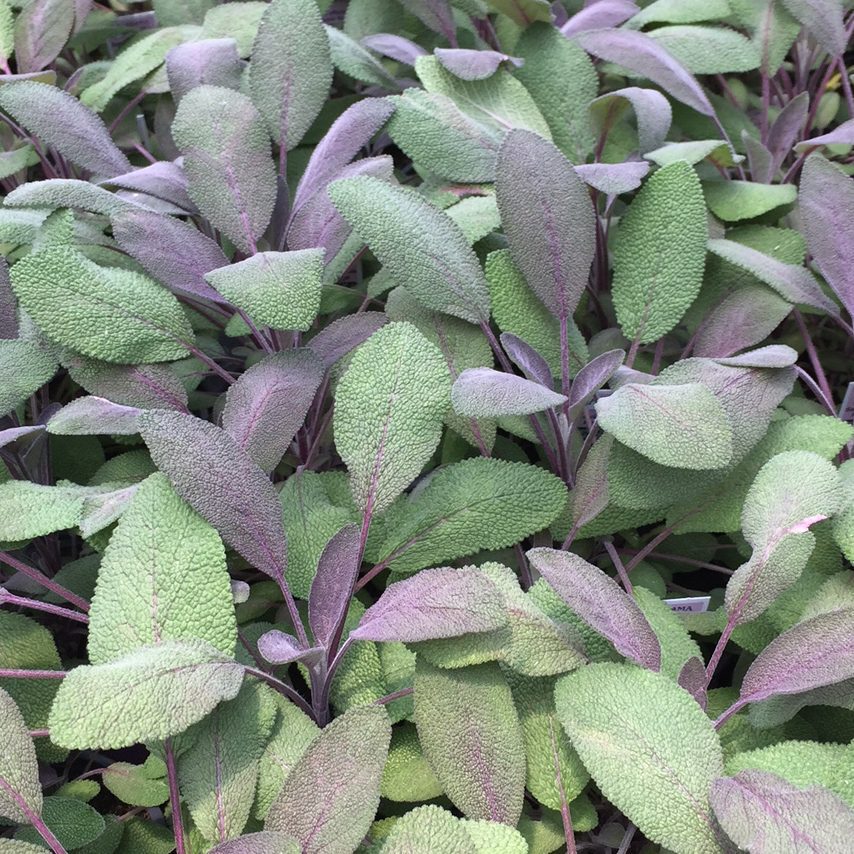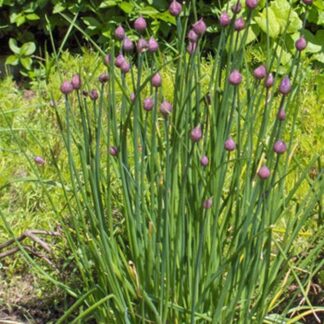Description
Purple Sage (Salvia officinalis ‘Purple’): A Bold Beauty for Garden and Kitchen Alike
There’s something magical about plants that can do it all—look beautiful, taste amazing, attract pollinators, and still ask for very little in return. Purple sage is one of those plants.
If you’re dreaming of a garden that is both useful and gorgeous, Purple sage (Salvia officinalis ‘Purple’) might just be your new favorite. This unique herb stands out with its deep purple leaves and classic sage aroma. It adds a splash of color, a touch of drama, and a lot of flavor.
In this guide, we’ll walk through everything you need to know about Purple sage. We’ll talk about how to grow it, how to use it, and why so many gardeners love it. Whether you’re a first-time herb grower or a seasoned green thumb, this plant deserves a spot in your garden.
What Is Purple Sage?
Purple sage is a special type of common sage. While regular sage (Salvia officinalis) has gray-green leaves, this one has rich, velvety purple foliage when young. As the leaves age, they soften into green tones with purple hints. The result? A living, changing rainbow of color in your garden.
But this plant isn’t just about looks. Purple sage also smells and tastes just like regular culinary sage. It has that strong, earthy flavor we all love in stuffing, sauces, teas, and meats. So it’s both pretty and practical—what’s not to love?
Why Gardeners Love Purple Sage
Let’s take a closer look at what makes this plant so special:
1. Beautiful, Bold Foliage
When the leaves first appear, they are a deep, dramatic purple. Over time, they shift to soft green with a dusty purple glow. It’s like watching a slow, graceful dance right in your garden. The velvety texture adds even more charm, making Purple sage a standout in any space.
2. Perfect Size for Any Garden
This plant grows in a compact, rounded shape. It reaches about 12 to 24 inches tall and wide. That makes it a great choice for small garden beds, containers, and tight spaces. You can even grow it in a kitchen window box or on a sunny patio.
3. Culinary Superstar
Purple sage may look fancy, but it still brings that classic sage flavor. You can use it just like regular sage—fresh or dried. It’s amazing in roasted meats, holiday stuffing, soups, and even teas. And because the leaves are purple, they also make lovely garnishes!
4. A Pollinator Magnet
In late spring and summer, Purple sage blooms with soft lavender-blue flowers. These blooms attract bees, butterflies, and other helpful insects. So when you grow Purple sage, you’re also helping your local ecosystem thrive.
5. Tough and Drought-Resistant
Like most sages, this variety is super easy to care for. Once established, it handles drought like a champ. It thrives in dry, sunny conditions and doesn’t mind a little neglect. This makes it a great plant for low-maintenance gardeners or busy families.
How to Use Purple Sage in Your Garden
This plant fits into so many garden styles and uses. Here are some fun ideas:
🌿 As a Culinary Herb
The flavor of Purple sage is bold and earthy. Use it to season meats, add depth to stews, or create soothing herbal teas. You can also dry the leaves for later or freeze them in olive oil cubes for quick seasoning all year round.
🌸 As an Ornamental Plant
The foliage is eye-catching enough to plant anywhere you want a pop of color. Try it in front yard beds, along borders, or in flower arrangements. It pairs beautifully with silver plants like lavender and dusty miller.
🪴 In Herb Gardens or Pots
Purple sage plays well with other Mediterranean herbs—think rosemary, oregano, thyme, and marjoram. Grow them together in a sunny raised bed or large container for a fragrant, edible display.
🐝 In Pollinator Gardens
Its flowers are a feast for pollinators. Plant it near other nectar-rich plants like echinacea or yarrow to create a wildlife-friendly space.
🌱 As a Groundcover
Thanks to its dense, spreading habit, Purple sage works well as a groundcover in sunny spots. It fills in spaces and helps control weeds while looking fantastic.
How to Grow and Care for Purple Sage
You don’t need a green thumb to grow this beauty. In fact, once it’s established, it mostly takes care of itself. Let’s walk through the basics:
1. Sunlight Needs
-
Full Sun is Best: Aim for 6 to 8 hours of sunlight each day. That’s how you get the richest color and healthiest growth.
-
Partial Shade Is Okay: In very hot areas, a bit of afternoon shade helps prevent leaf scorching. But too much shade can make the plant leggy and pale.
2. Soil Tips
-
Well-Drained Soil is Key: Sage hates wet feet. Choose sandy or loamy soil that drains well.
-
pH Balance: Slightly alkaline soil is ideal. If your soil is too acidic, you can add a little lime to help.
3. Watering Routine
-
Young Plants: Water often at first, until the roots are strong.
-
Mature Plants: Once established, Purple sage only needs water when the topsoil is dry. Be careful not to overwater—this is one of the few things that can harm it.
4. Climate and Hardiness
-
Hardy in USDA Zones 5–9: This covers a big range of growing regions!
-
Winter Care: In cold zones, mulch around the base in fall to protect the roots from freezing.
5. Feeding and Fertilizing
-
Keep It Simple: Purple sage actually prefers poor soil. You usually don’t need to fertilize at all.
-
Optional Boost: A light spring feeding with compost or a slow-release fertilizer helps encourage new growth.
6. Pruning and Harvesting
-
Prune in Early Spring: Cut back any woody or dead stems to help new shoots form.
-
Trim Lightly All Season: Snip back overgrowth to keep the plant tidy and bushy.
-
Harvest Often: Take leaves from the outer stems. Frequent harvesting encourages more growth and keeps the plant looking great.
7. Propagation
There are two easy ways to make more Purple sage:
-
Stem Cuttings:
-
Take 4–6 inch cuttings in late spring or early summer.
-
Remove the bottom leaves and place the stem in moist soil or water.
-
Once roots grow, move the new plant to its home!
-
-
Division:
-
Dig up and divide a mature plant in early spring or fall.
-
Replant the divisions where you want them.
-
Common Issues (And How to Fix Them)
Even the easiest plants can run into trouble sometimes. Here’s how to keep your Purple sage healthy:
-
Yellow Leaves? Probably too much water or poor drainage. Let the soil dry out and improve drainage if needed.
-
Powdery Mildew? This happens in humid areas with poor air flow. Give your plant space, avoid overhead watering, and try neem oil if needed.
-
Leggy Stems? Not enough sun or too much fertilizer. Move to a sunnier spot and cut back on feeding.
-
Pests? Aphids, whiteflies, or spider mites might show up. Treat them early with insecticidal soap or neem oil.
Seasonal Care Guide
Here’s what to do throughout the year:
-
Spring: Cut back old growth and feed lightly with compost. Watch for new shoots!
-
Summer: Harvest leaves regularly. Water only during long dry spells.
-
Fall: Slow down watering. Mulch in colder regions to protect the roots.
-
Winter: In warm climates, it stays semi-evergreen. In cold areas, wait until late winter to trim back dead stems.
Styling Tips for Your Garden
Need some design ideas? Purple sage is great for:
-
🌿 Herb Gardens: Pair it with green or gold herbs for contrast.
-
🪴 Containers: Use it in pots with trailing thyme and upright rosemary.
-
🪻 Borders: Plant it alongside soft, silvery plants like lamb’s ear or artemisia.
-
🪨 Rock Gardens: Perfect for dry, sunny areas where it adds bold texture and color.
Why You’ll Love Purple Sage
This isn’t just another herb. Purple sage brings color, texture, flavor, and pollinator power—all in one easy-to-grow plant. Whether you want something special for your kitchen garden, a colorful touch for your flower beds, or a reliable low-maintenance plant, Purple sage checks every box.
It’s bold. It’s beautiful. And best of all, it’s useful.
So go ahead—plant a little purple magic in your garden this season. You’ll be amazed at how much joy this one plant can bring.





